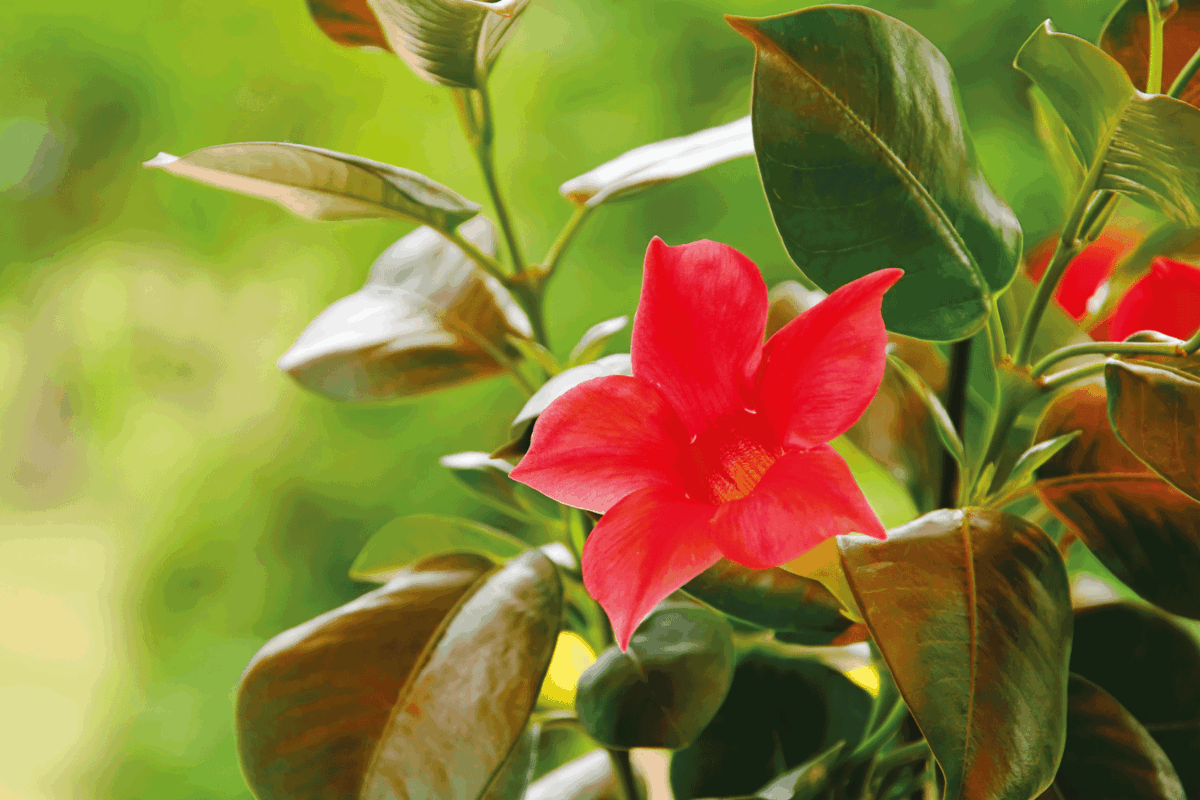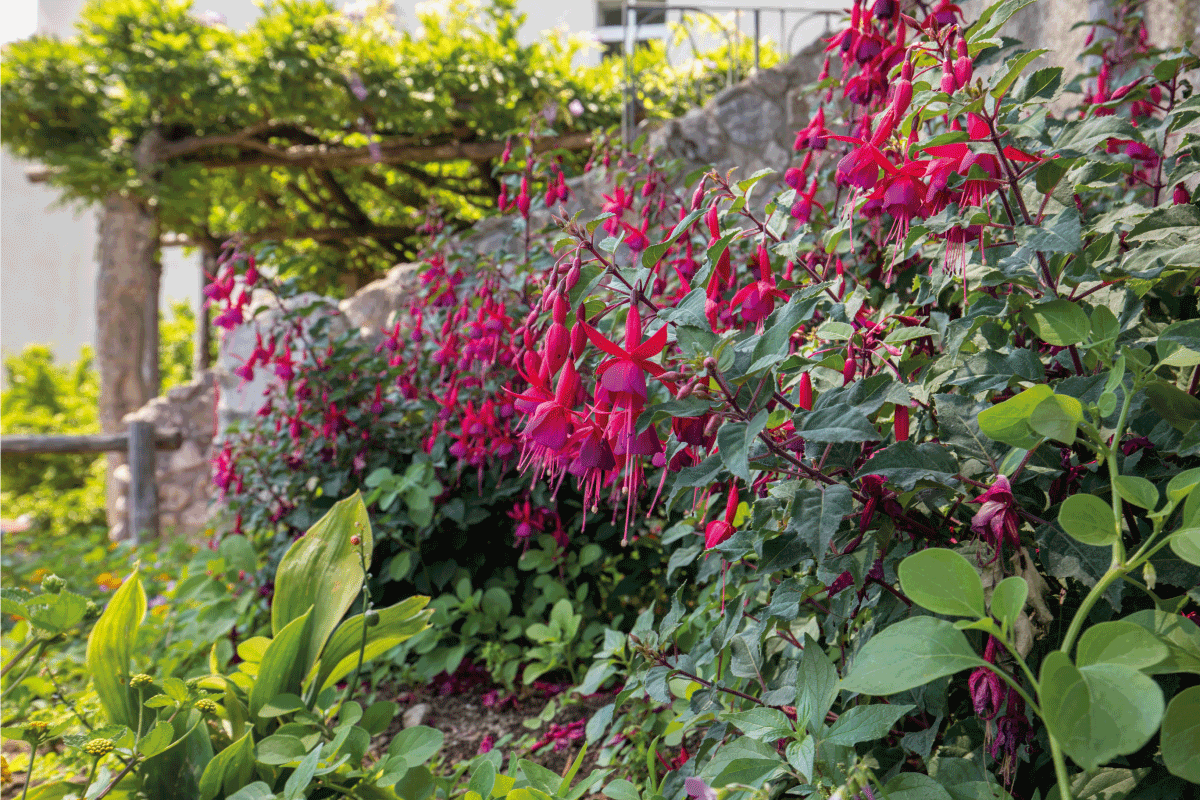The Dipladenia Brazilian plant is known for its beautiful trumpet-shaped flowers and its long glossy leaves. Given that it's typically grown in tropical and subtropical climates, the Dipladenia can be prone to frostbite during the colder months of the year if grown in areas with moderate temperatures. With that being said, how do you overwinter a Dipladenia? We've looked into the best method for this. And this post, we'll share it with you.
Here are the steps to overwinter your Dipladenia:
- Bring the plant in from outside
- Transplant the plant into a pot
- Prune the Dipladenia
- Take care of any pest issues
- Scale back watering sessions
- Add fertilizer, only if needed
- Ensure that the location is ideal
The Dipladenia plant can reach heights up to 8 to 10 ft tall, but during the winter months, these plants barely grow. And care should be taken to ensure that they can survive the colder weather conditions. Continue reading to learn more about how to protect your Dipladenia plant during the winter months and what tools you'll need to do so.
Contents

Steps to Overwinter Dipladenia Plants
If you live in a region where the temperature typically falls into the low 50s or below in the winter, it's best to move your Dipladenia indoors to protect it. This is also known as overwintering. Be sure to have a new pot ready for your plant, and in some cases, you may need a bigger pot if the plant has become root-bound.

Things you'll need:
- Pruning shears
- Trash bags
- Rubbing alcohol
- Insecticide or neem oil
- Plant pot
- Plastic gloves
- Garden shovel
1. Bring the plant in from outside
The first thing you'll need to do is dig up your Dipladenia plant from your garden. To do this, grab a shovel and while trying not to damage the roots, carefully dig the plant up by the roots. It's best to outline the plant's perimeter with your shovel ahead of time so that you'll know how big the root ball should be (this will also determine the best size for your pot).
Check out this garden shovel on Amazon.
2. Transplant the plant into a pot
Next, transplant the plant into a brand new pot. Be sure to shake off the excess soil from the root ball so that you can comfortably fit it inside the new pot. Next, place to plant in the pot and add about an inch or two of quality soil to the bottom of the pot. Leave about 1 to 2 inches between the rim of the pot and the top layer of the soil. Make sure that the soil is well-draining.
3. Prune the Dipladenia
It's always best to prune the plant before you set it up for the winter. To do this, cut back the vines a few inches, making sure to remove any dead branches and leaves. Also, make sure to adequately sanitize your pruning shears beforehand. Remember that the plant will grow slowly during the winter months, so you don't want to over-prune it — this can discourage growth when springtime comes. Trimming the plant back to about 9 to 12 inches should generally suffice.
Note: Be advised that when pruning the Dipladenia plant or pinching the branches back, you will cause it to ooze a bit of sap. This milky white sap is toxic to ingest and can be fairly irritating to your skin. So, be sure to wear plastic or rubber gloves while cutting the plant, and always wash your hands and sanitize your pruning equipment afterward.
Disinfect any spaces where the pruned branches were placed, if not directly inside of trash bags.
Read more details about these pruning shears on Amazon.
4. Take care of any pest issues
After pruning the plant, be sure to give it a quick inspection for pests. You may have noticed pests during the pruning process as well. If there is an infestation, apply neem oil or another applicable pesticide to the plant as needed. Look for any small black, brown, or white spots on the underside of the leaves, as well as any holes in the leaves. You can also wipe the plant down in rubbing alcohol or give it a quick rinse with lukewarm water if the infestation is minor.
Read more details about neem oil on Amazon.
5. Scale back watering sessions
During the winter months, you'll want to cut back on watering the Dipladenia plant. The reason is that the planet will grow less, and it will be easier to accidentally overwater the plant during this time than to underwater it. However, it's best to water the Dipladenia well before the winter months arrive.
This way, the roots will be insulated against potential drought, and you won't have to worry about watering them more than once a month initially.
6. Add fertilizer only if needed
While you can apply fertilizer to the Dipladenia plant during the winter months, it's best to do so no more than once if you must. If you do apply fertilizer, try to do it around mid to late February. This way, the plant will have an early start for new growth before you place it outside for the summer.
You can typically use any all-purpose houseplant fertilizer (an NPK of 20-20-20 is ideal) for Dipladenia plants. However, you'll want to ensure that you apply the fertilizer per the directions to avoid chemical burn.
Check out this fertilizer on Amazon.
7. Ensure the location is ideal
When choosing the best spot for your plant, make sure that it's one where the temperature goes no lower than 60 degrees Fahrenheit. Ideally, the plant should be placed in temperatures of anywhere between 65-72 degrees Fahrenheit. The humidity level should be moderate at about 50 to 60%. The plant should receive some partial lighting throughout the day.
However, you don't want the plant to receive full sun during this time. When temperatures outside stay above 60 degrees Fahrenheit, transfer the plant back to its outdoor location. Be sure that the potential danger of frost has passed. And it's best to check the ground to make sure that it's not frozen.
If you decide to keep the plant indoors, move it to a location where it can receive at least six hours of sunlight each day. You'll also want to resume watering sessions at least one time a week.
Need more of a visual for transplanting this plant? Check out this video:
How do you take care of Dipladenia in the winter?
If you live in an area with winters that are particularly cold, the first thing you'll want to do is to bring your plant indoors if it's outdoors. This means placing the plant in a pot and ensuring that it is kept in a relatively cool location with temperatures from 60 to 72 degrees Fahrenheit.
You'll also want to ensure that the plant receives some partial sun throughout the day, and it's best to refrain from fertilizing it for a while. While the plant won't need as much water as it does during the growing season, it's best to water it whenever the soil dries out — about once a month is ideal. Lastly, be sure to keep the plant in a location far away from cold drafts, events, or window air conditioning units.

What is the lowest temperature a Dipladenia can tolerate?
On average, the lowest temperature a Dipladenia plant can tolerate is about 50 degrees Fahrenheit. However, if the plant is kept in this temperature for multiple days, its growth will become stunted and it can even die. Ideally, these plants should be kept at temperatures above 65 degrees Fahrenheit.
Can Dipladenia survive a frost?
These plants do not survive frost particularly well. However, there may be a chance for survival if the effects of the exposure are minimal and the plant is immediately tended to. This involves moving the plant to a warmer location and giving it the nutrients that it needs to repair itself, which usually includes a fertilizer application.
You'll also need to ensure that environmental factors such as sunlight, temperature, and humidity are ideal for the plant's survival.
Should Dipladenia be cut back?
In most cases, yes. It's best to trim the Dipladenia plant back a few inches so that it fits comfortably indoors. To do so, be sure that you remove any dead branches and leaves from the plant during the winter months. The plant will need all of its energy at this time and dead foliage can cause it to expend more energy than necessary.

Wrapping Things Up
We hope this post has helped illustrate how to overwinter a Dipladenia plant. Remember, the most important thing to successful overwintering is ensuring that the plant is warm enough and receives enough sun and water.
Before you go, be sure to check out some of our other posts:






Will the diplademia plant go dormant, lose its leaves and come back if overwintered in a garage with no light? We tried to keep it in the sunroom, but those temps drop to very cold during the winter at night, and the plant died. Also can you propagate diplademia from cuttings? Many thanks if you have time to answer!